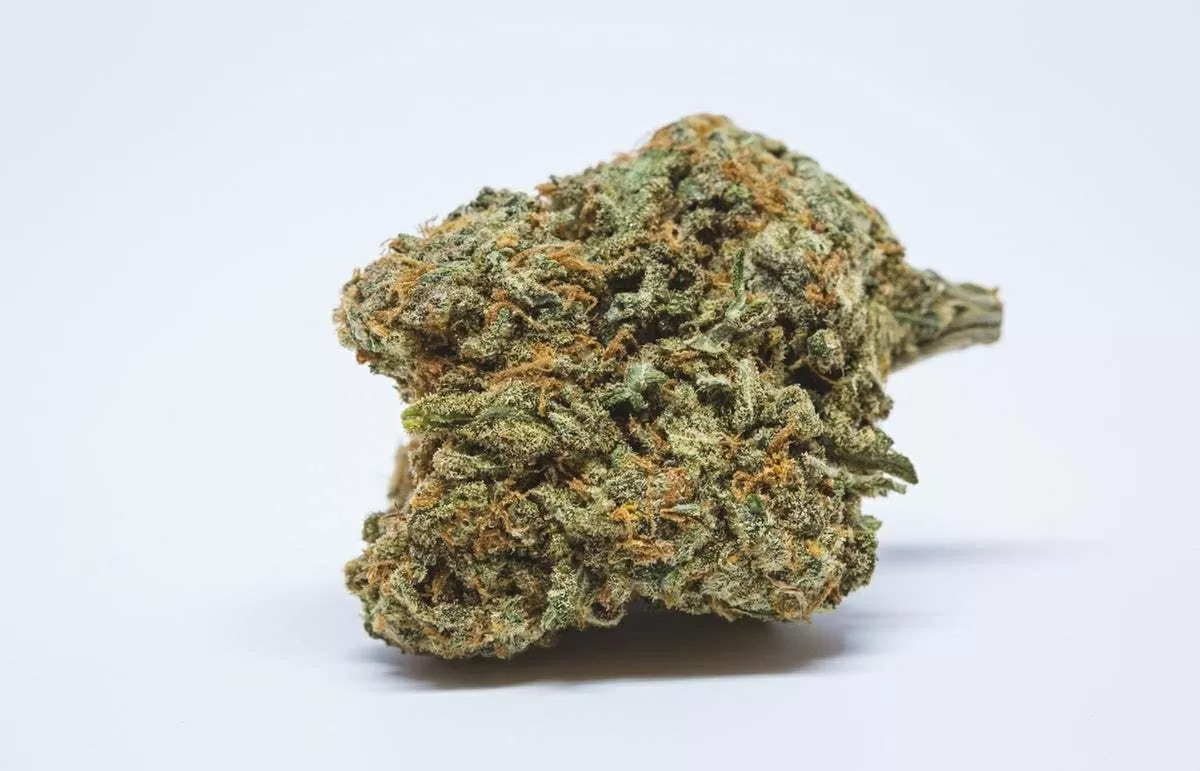Called Cheese weed because of its characteristic pungent, sour aroma, this cannabis strain is nothing more than an Indica-dominant hybrid created in the UK in the early 1980s that has become very popular in recent years, not only because of its unique and sought-after taste, but especially because of its potency and effects.
Cheese Marijuana specifically originates from crossing Skunk#1 with Afgan and only then will different genetics be hybridised to produce more resin and trichomes. Known for its ability to promote relaxation, euphoria and happiness, it is considered by regular users to be a unique marijuana strain with a unique taste that is considered to be one of the best in the world. Let's find out through this guide all the characteristics of the Cheese strain, how to grow it and its effects.
What is the Cheese variety and what are its characteristics?
What makes Marijuana Cheese undoubtedly one of the most popular cannabis strains is its aroma, which is made up of an unmistakable harmony of scents and a well-balanced interplay of contrasts: particularly spicy, persistent and pungent elements combine perfectly with fresh and sometimes fruity scents where every aromatic note plays an active role, creating a refined and unique blend.
On the one hand, the various terpenes typical of uk Cheese stand out, joined by the slightly rancid, but in a purely positive sense, tips of octanoic acid, which in turn voluptuously embraces the sweet, fruity notes of methyl-t-butyl ether, all combined with ethyl and methyl acetates.
Just as with the most sought-after cheeses, the most pleasant scents in cannabis tend to be anticipated by scents which are often not appreciated from a purely olfactory point of view. Cheese Marijuana does not disappoint and behaves in a similar way due to the presence of isovaleric acid, the same which emphasises the typically malodorous terpenes. It ranges from the typical chicken coop smell of hexanoic acid to the rotten cabbage triggered by methyl mercaptan, which together create the overpowering character of Cheese, appreciated not only when smoked from a joint but also when used in the preparation of edibles.
It is therefore easy to see that the Cheese marijuana variety is not for everyone: the strong, distinctive taste tends to appeal only to the most original palates, while those who prefer milder aromas will not.
And while Cheese does not appear among the most popular genetics on the international scene by chance, it remains among the most discussed and debated genetics precisely because of the pungent, full-bodied notes that characterise it, intended only for true connoisseurs.
This does not detract, however, from the fact that there are many users who like to endure the first whiffs and then appreciate the pleasant taste, thanks to the unami effect which typically cancels out the more annoying aromas and brings out the more pleasant and satisfying ones. The effects are also highly appreciated, providing an intense feeling of well-being and relaxation that many compare to "peace of mind", thanks to the high production of THC - rich trichomes.
The feeling of euphoria and happiness is just as marked, without neglecting the significant therapeutic benefits: Cheese Marijuana is known to be effective in treating chronic joint pain, muscle inflammation and arthritis. Its many variants are also often used to successfully combat anxiety, insomnia, stress and depression, as well as to help with nausea and lack of appetite.
History of Cheese-type marijuana
The hybrid that seems to have given birth to this particular marijuana strain, Cheese, seems to revolve around a real legend, with roots in the first half of the 80s. It all seems to have started with the journey of Sam the 'Skunkman', a Californian grower who was determined to learn the latest growing techniques and improve his own.
He flew across the Atlantic to Holland and brought with him the seeds of his own cannabis plants which had been cultivated so far. It took years of testing, cross-breeding and experimentation before significant results were achieved. The Dutch themselves began clamouring for what would later become the hugely popular Skunk #1, Sam's 'daughter', and it quickly spread to the Netherlands.
The production of this type also crossed the English Channel and ended up intriguing not only because of the quality of the inflorescences but also and above all because of the intense aromas that even then made it unique. The story goes that a bag of Skunk seeds fell into the hands of an English grower who, with the firm aim of cloning the genetics, achieved a totally unexpected result in 1988.
What struck the nostrils was in fact what would become the distinctive feature of the newborn strain: a smell faithfully reminiscent of cheese, the same one that officially decreed the birth of Cheese marijuana, the same one that became popular in the 90s and represented a real boom: one of the most consumed cannabis strains in the UK, it accompanied the rave scene of the period and then spread widely becoming a must in all countries where it was legalised. In short, Cheese's history of success and unusual aromas is still as popular today as it was then, despite its innate uniqueness, among regular and occasional weed users.
How to grow Cheese-type marijuana
The Cheese marijuana strain, which is as widespread as Skunk and Amnesia Haze, has a high concentration of CBD, while THC is only around 15%. It is 60% Indica genetics hybridized with 40% Sativa. The growth phase lasts about 5 weeks and the flowering period is about 8 weeks when grown indoors. When grown outdoors, harvest is around mid-October.
Cheese Marijuana has an average yield of around 500 grams per square metre and can easily reach two and a half metres in height when grown outdoors. This is a relatively easy genetics to grow, although it needs the right light and space conditions, and in this case can produce buds containing as much as 17% THC.
Extremely hardy, it tolerates fluctuations in humidity rather well, although it is necessary to ensure that temperatures are always between 21 and 26°C. By adopting the appropriate techniques of pruning and bending the branches to reduce the height, it is possible to manage the cultivation easily even within rather small spaces without any particular complications. Slight defoliation can ensure optimum results and produce a very satisfactory amount of buds.
Cheese can also be grown using the ScrOG (Screen of Green) method, whereby special grids are used to allow the plants to grow on the surface, thus maximising flower production.
However, it is still a species suitable for experienced growers who know how to apply all the necessary precautions in cannabis cultivation, according to the needs and requirements of each plant.
 Italiano
Italiano Español
Español English
English Français
Français Deutsch
Deutsch
